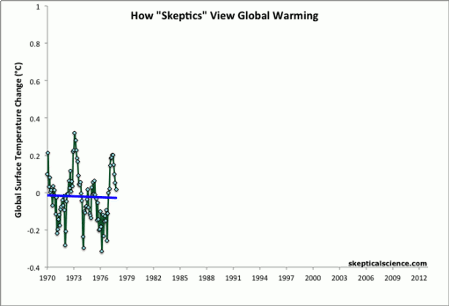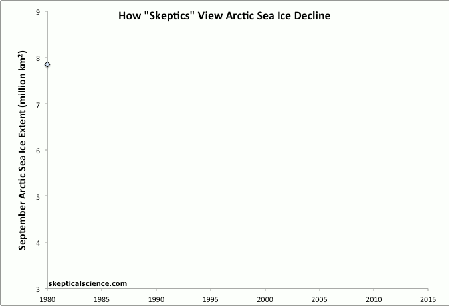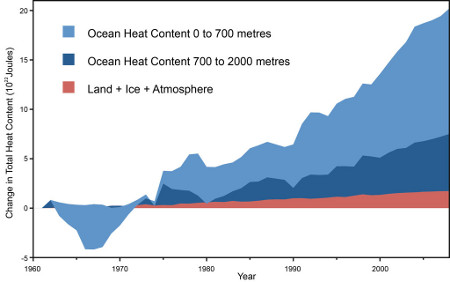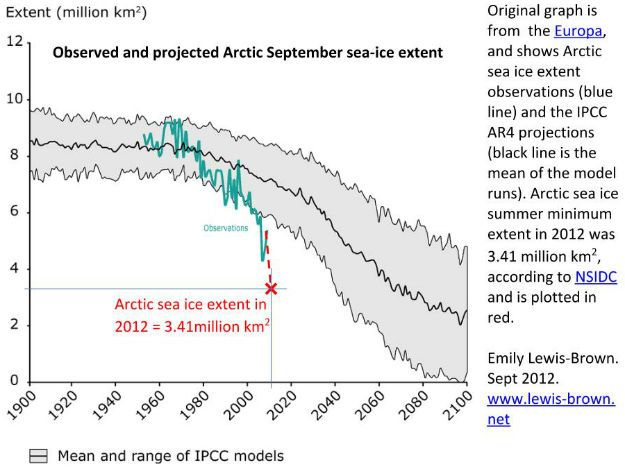That's about two decades sooner than various models for climatic
warming have indicated the Arctic might fully open.
“No models here,” Peter Wadhams, professor of applied mathematics and
theoretical physics at the University of Cambridge in England, told
the Arctic Circle Assembly in Reykjavik, Iceland, on Sunday. “This is
data.”
Wadhams has access to data not only on the extent of ice covering the
Arctic, but on the thickness of that ice. The latter comes from
submarines that have been beneath the ice collecting measurements
every year since 1979.
Wadhams later clarified that by “ice-free” he didn't exactly mean
the Arctic was going to look like the Baltic Sea in summer. The
scientific definition of "ice-free" is complicated.
Wadhams' pronouncement was angrily challenged by one of the scientists
modeling sea ice decline, but the elderly physicist stuck to his
guns. He admitted he is predicting a very early opening of the Arctic,
but this is “not a model.”
“I wasn't issuing any threats to anyone.”
The modelers, he told Alaska Dispatch News later, are very sensitive
about their models. But he added that it's hard to deny the actual
data. He had plotted the ice decline as a graph curving steadily and
increasingly downward since the 1970s and hitting zero in 2020.
Wadhams — who has spent much of his life working in, on or under
the Arctic ice — said he is not suggesting the Arctic is on its way
to becoming the new Mediterranean. He is only suggesting the polar
ice cap that has locked the region under ice year-round for
centuries is going to go away, at least in summer.
“In fact, it (the Arctic) could become nastier” because of that, he
added, citing the weather conditions that can develop as rain, wind
and snow whip over vast expanses of broken ice.
The loss of Arctic ice might actually have more of an impact on the
climate than on humans over the short term. Without ice cover to
reflect sunlight back into space, the summer Arctic will begin to
absorb a lot of solar energy.
The effect of that, Wadhams said, “is like increasing our emissions by
a quarter.”








 Figure 1: Ocean Heat Content from 0 to 300 meters (grey), 700 m
(blue), and total depth (violet) from ORAS4, as represented by its 5
ensemble members.
Figure 1: Ocean Heat Content from 0 to 300 meters (grey), 700 m
(blue), and total depth (violet) from ORAS4, as represented by its 5
ensemble members.



